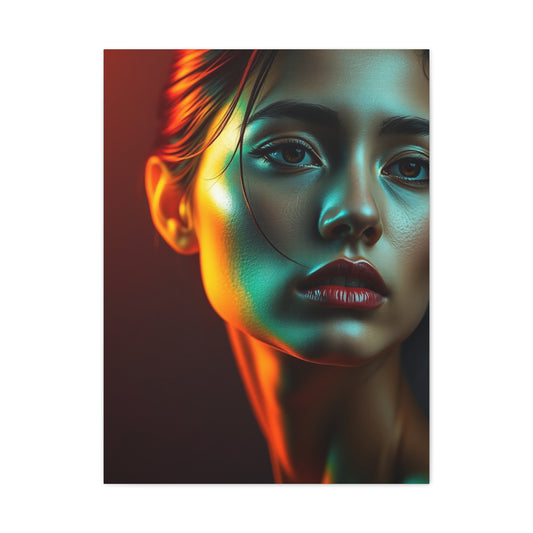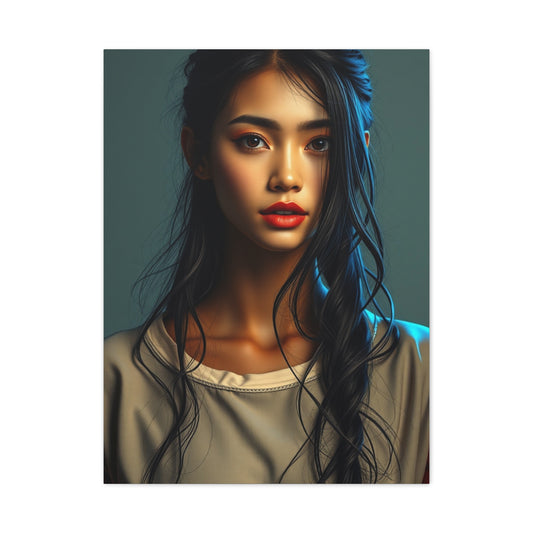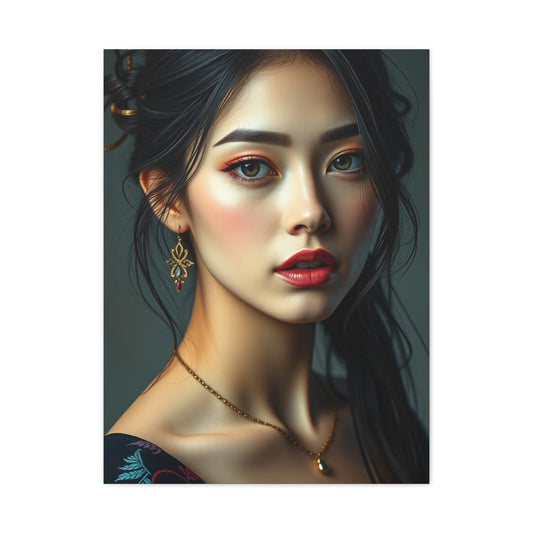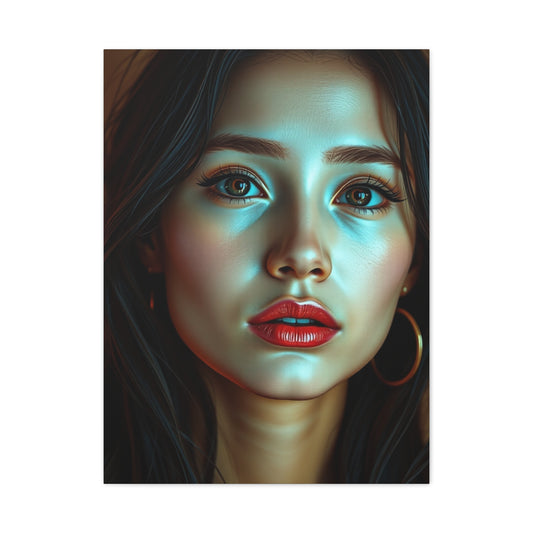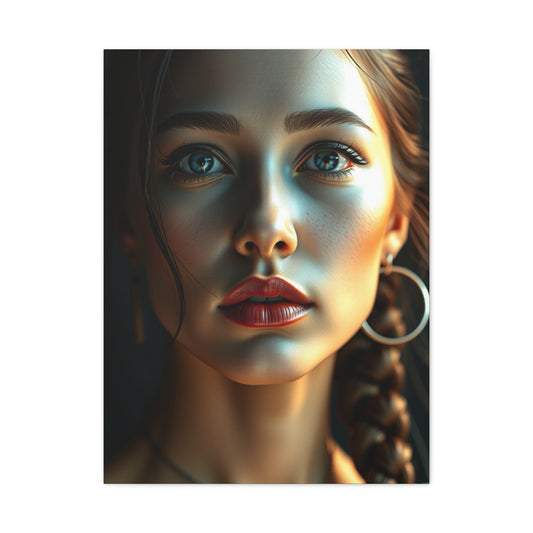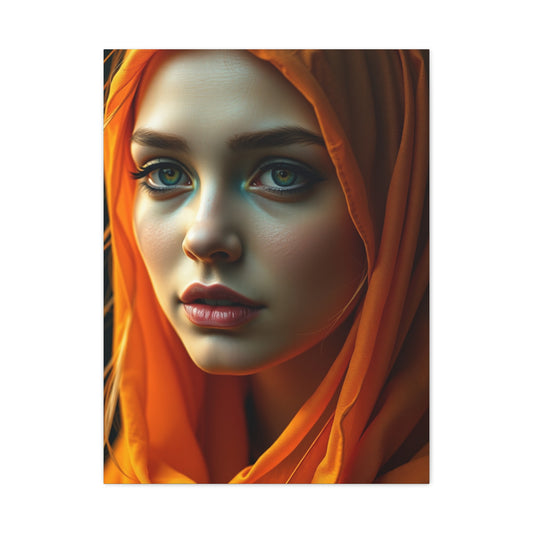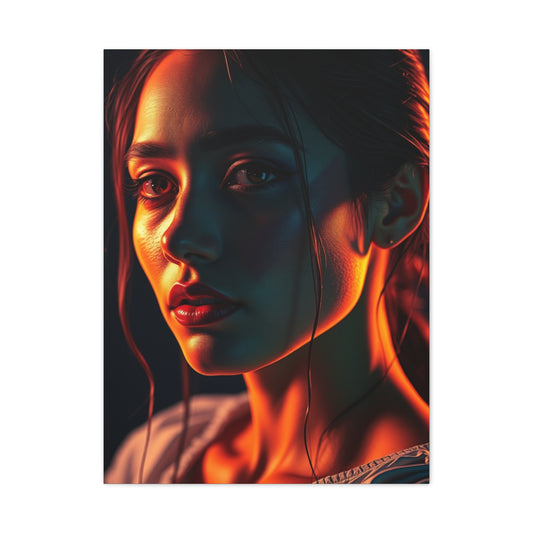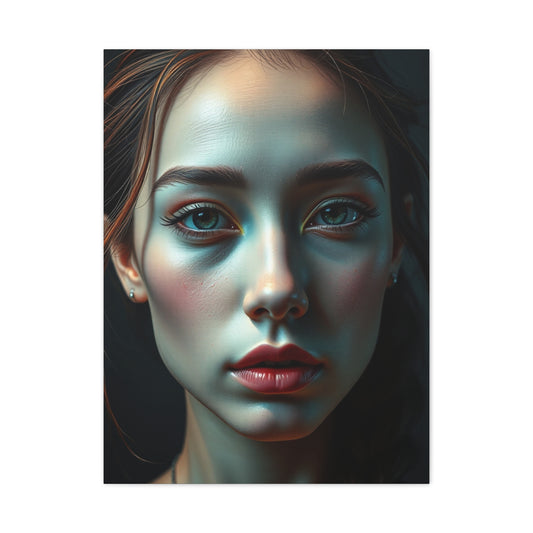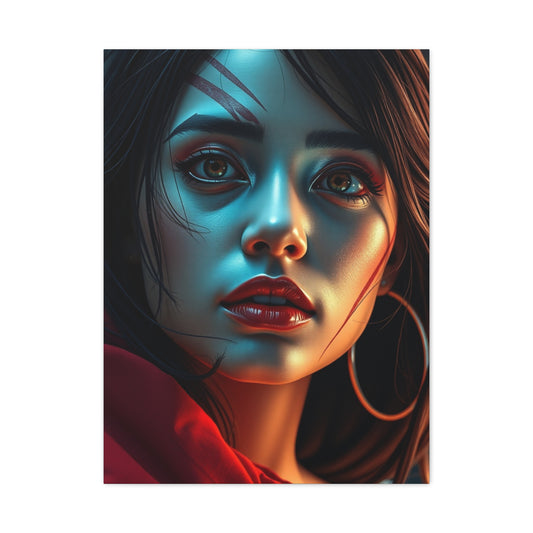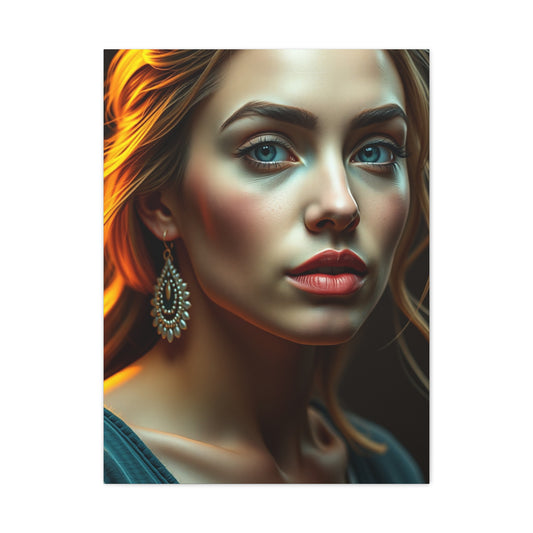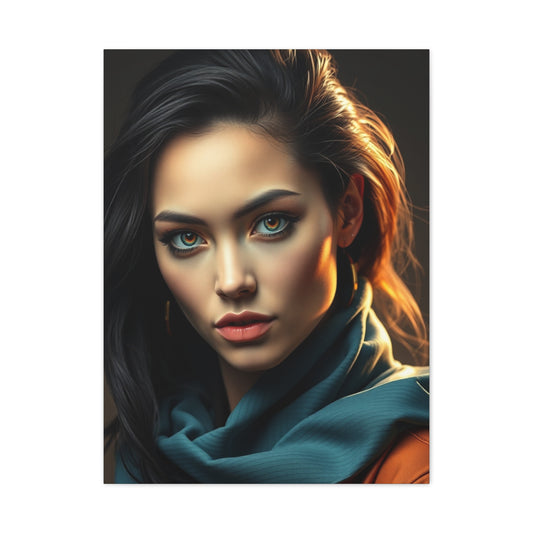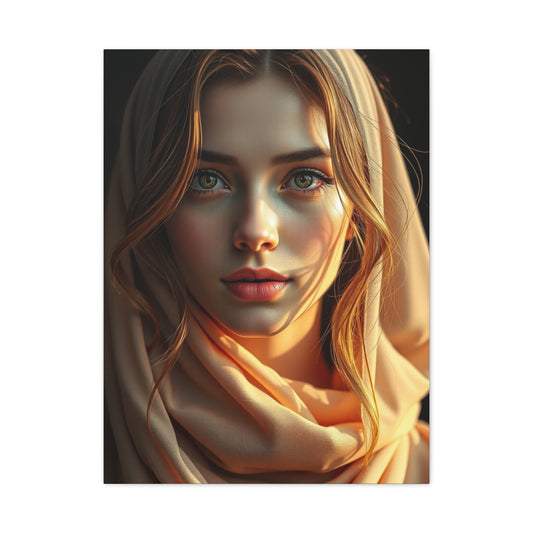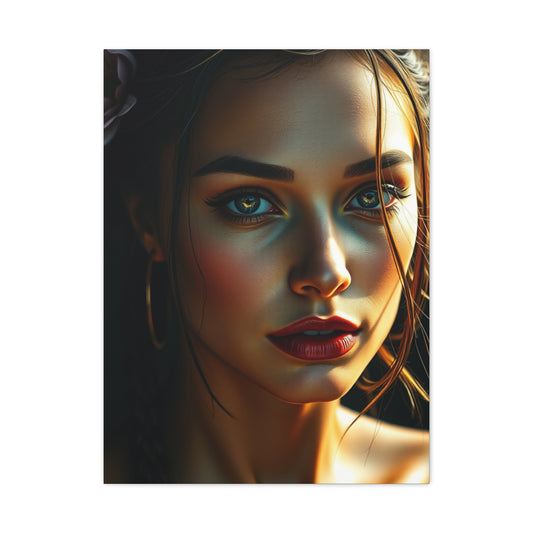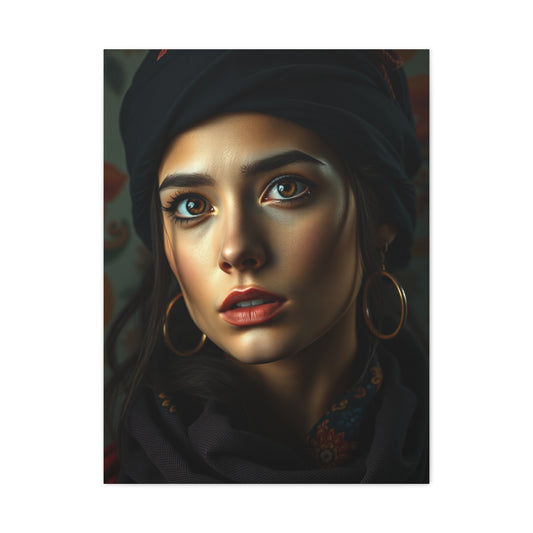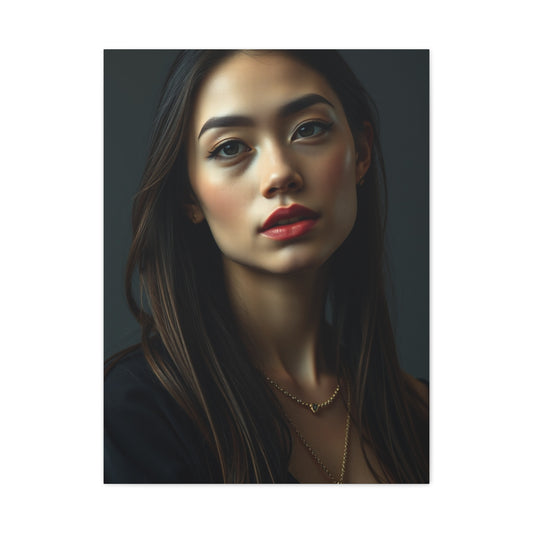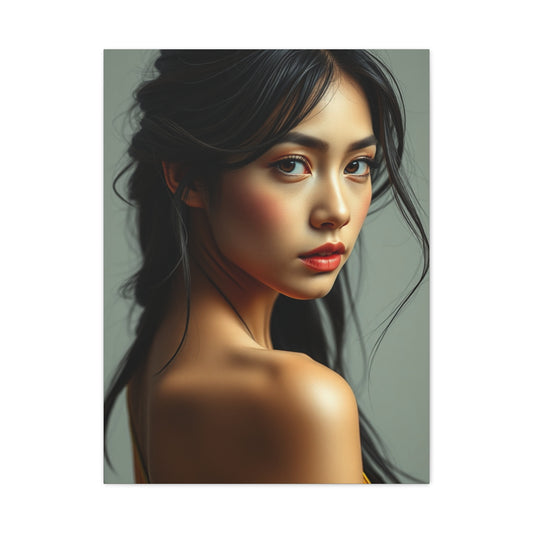Exploring the Symbolism Behind Female Wall Art and Feminine Design
The realm of interior decoration has witnessed a remarkable renaissance in recent decades, with homeowners and designers increasingly recognizing the profound impact that carefully curated visual elements can have on living spaces. Among the most compelling and emotionally resonant choices available today is the incorporation of female-inspired artistry into residential and commercial environments. This comprehensive exploration delves into the multifaceted world of feminine visual expression, examining how these powerful pieces can revolutionize your living spaces while celebrating the rich heritage of women's contributions to the creative arts.
Contemporary interior design philosophy emphasizes the importance of creating spaces that reflect personal values, aspirations, and aesthetic preferences. The inclusion of female-centric visual elements serves multiple purposes beyond mere decoration. These pieces function as conversation starters, sources of inspiration, and powerful statements about the homeowner's commitment to celebrating diverse perspectives and honoring the often-overlooked contributions of women throughout history.
The journey toward understanding how feminine artistry can enhance your living environment begins with recognizing the unique qualities that distinguish this category of creative expression. Female artists and subjects have long brought distinctive perspectives to visual culture, often emphasizing themes of nurturing, strength, resilience, and emotional depth. These characteristics translate beautifully into home décor, creating environments that feel both sophisticated and approachable, elegant yet grounded in authentic human experience.
Modern homeowners increasingly seek to move beyond generic, mass-produced decorative elements toward more meaningful, personalized selections that reflect their individual stories and values. Female-inspired visual pieces offer an exceptional opportunity to achieve this goal while simultaneously supporting contemporary and historical female creators. The market for such pieces has expanded dramatically, encompassing everything from reproductions of classical masterpieces to cutting-edge contemporary works by emerging artists.
The psychological impact of surrounding oneself with empowering imagery cannot be overstated. Research in environmental psychology consistently demonstrates that the visual elements in our immediate surroundings significantly influence our mood, productivity, and overall sense of well-being. When these elements specifically celebrate female strength, creativity, and achievement, they can serve as daily reminders of possibility and potential, particularly for women and young girls who encounter these images regularly.
Furthermore, the integration of female-focused visual elements contributes to broader cultural conversations about representation and diversity in our personal spaces. By consciously choosing to display such pieces, homeowners participate in challenging traditional narratives about whose stories deserve to be told and celebrated. This act of curation becomes a form of quiet activism, subtly reshaping cultural perceptions one living room at a time.
The versatility of feminine-inspired décor extends across all design styles and aesthetic preferences. Whether your home leans toward minimalist modernism, rustic farmhouse charm, eclectic bohemian flair, or classical elegance, there exist female-centric pieces that can enhance and complement your existing design scheme. This adaptability makes such selections particularly valuable for homeowners who may be hesitant about making dramatic decorative changes but still desire to incorporate more meaningful elements into their spaces.
Feminine Touch
The concept of the feminine touch in interior design transcends mere color palettes or decorative motifs, encompassing a holistic approach to creating spaces that embody qualities traditionally associated with femininity: grace, intuition, nurturing, and emotional intelligence. This design philosophy recognizes that homes serve not only as physical shelters but as sanctuaries for the soul, places where inhabitants can recharge, connect with loved ones, and express their authentic selves.
Incorporating feminine elements into home design requires a nuanced understanding of how various visual components interact to create cohesive, harmonious environments. The feminine touch manifests through careful attention to texture, color harmony, scale relationships, and the strategic placement of meaningful objects. Rather than overwhelming spaces with overtly decorative elements, this approach emphasizes subtlety and sophistication, allowing each carefully chosen piece to contribute to an overall sense of refined elegance.
Color plays a particularly crucial role in establishing feminine energy within interior spaces. While traditional associations might immediately call to mind soft pastels and muted tones, contemporary interpretations of feminine color schemes encompass a much broader spectrum. Deep jewel tones, earthy neutrals, and even bold, saturated hues can all contribute to feminine energy when applied thoughtfully. The key lies not in specific color choices but in how these colors are combined and balanced throughout the space.
The integration of natural elements represents another fundamental aspect of feminine interior design. Plants, flowers, natural fibers, and organic shapes help create connections to the natural world while softening the harder edges often found in contemporary architecture and furniture design. These elements introduce life and vitality into spaces while providing visual interest through their inherent variations in texture, color, and form.
Textural diversity serves as a hallmark of successful feminine interior design. The juxtaposition of smooth and rough surfaces, soft and firm materials, and matte and glossy finishes creates visual and tactile richness that engages multiple senses. Layering different textures throughout a space prevents it from feeling flat or one-dimensional while adding depth and complexity to the overall design scheme.
The strategic use of lighting significantly impacts the feminine quality of interior spaces. Soft, warm lighting creates inviting atmospheres that encourage relaxation and intimate conversation. Multiple light sources at varying heights and intensities allow for flexibility in mood creation, enabling spaces to transition seamlessly from bright and energizing during the day to cozy and romantic in the evening.
Personal collections and meaningful objects play essential roles in establishing feminine energy within homes. These pieces tell stories about the inhabitants' experiences, relationships, and values. When thoughtfully displayed, personal collections become integral components of the design scheme rather than mere afterthoughts. The key lies in finding balance between showcasing cherished items and maintaining visual coherence throughout the space.
The feminine approach to spatial organization emphasizes flow and movement rather than rigid geometric arrangements. Furniture placement often follows curved or organic patterns, creating natural pathways that encourage exploration and discovery. This approach recognizes that people move through spaces in intuitive ways, following sight lines and gravitating toward areas that feel comfortable and inviting.
Comfort and functionality remain paramount considerations in feminine interior design, but these practical requirements are addressed without sacrificing aesthetic appeal. Seating arrangements prioritize conversation and connection, with furniture positioned to facilitate easy interaction among family members and guests. Storage solutions are integrated seamlessly into the design scheme, maintaining visual harmony while addressing the practical needs of daily life.
The incorporation of artistic elements serves as a defining characteristic of feminine interior design. Rather than treating art as an afterthought or mere wall covering, this approach recognizes artistic pieces as fundamental components of the overall design narrative. The selection and placement of art require careful consideration of color relationships, scale proportions, and thematic connections to other elements within the space.
Celebrating Women in Art
The rich tapestry of women's contributions to the visual arts spans millennia, encompassing diverse cultures, artistic movements, and creative expressions. From ancient cave paintings attributed to female hands to cutting-edge contemporary installations, women have consistently pushed artistic boundaries while offering unique perspectives on human experience. Understanding this historical context enriches our appreciation of female-created and female-focused art while providing valuable insights for contemporary collectors and decorators.
Throughout history, women artists have faced significant obstacles in gaining recognition for their creative achievements. Social conventions, institutional barriers, and limited access to formal training long prevented many talented women from pursuing artistic careers or receiving appropriate credit for their contributions. Despite these challenges, numerous women managed to create extraordinary works that continue to inspire and influence artists and art lovers today.
The Renaissance period, while primarily remembered for its male masters, also produced remarkable female artists whose works deserve recognition and celebration. Sofonisba Anguissola, often considered the first professional female artist, created stunning portraits that demonstrated technical mastery and psychological insight. Her self-portraits, in particular, offer fascinating glimpses into the experience of being a professional woman artist during the sixteenth century.
Artemisia Gentileschi stands as one of the most powerful and influential artists of the Baroque period, regardless of gender. Her dramatic compositions, masterful use of light and shadow, and fearless treatment of traditionally masculine subjects challenged contemporary expectations while establishing her as a formidable creative force. Her painting "Judith Slaying Holofernes" remains one of the most striking and psychologically complex works of its era.
The Impressionist movement marked a turning point for women in the visual arts, with several female artists gaining unprecedented recognition and acceptance within artistic circles. Mary Cassatt, Berthe Morisot, and Marie Bracquemond brought distinctive perspectives to the movement while achieving commercial and critical success. Their intimate depictions of domestic life and family relationships offered counterpoints to the predominantly male focus on urban scenes and leisure activities.
The twentieth century witnessed an explosion of female artistic talent across all mediums and movements. Georgia O'Keeffe's revolutionary approach to natural forms challenged traditional artistic conventions while establishing her as a uniquely American voice. Frida Kahlo's intensely personal and politically charged works continue to resonate with contemporary audiences, making her one of the most recognized and celebrated artists of any gender.
Contemporary female artists have continued to push boundaries while addressing current social, political, and cultural issues through their work. Artists like Cindy Sherman, Kara Walker, and Kehinde Wiley have transformed the art world through their innovative approaches to identity, representation, and power dynamics. Their works provide compelling options for contemporary collectors seeking pieces that engage with current cultural conversations.
The representation of women as subjects in art offers another rich area for exploration. Throughout history, female figures have served as symbols, muses, and subjects for countless artistic works. However, the perspective through which these figures have been portrayed has evolved significantly over time, reflecting changing social attitudes and power dynamics.
Classical representations of women in art often emphasized idealized beauty, mythological themes, or religious significance. Goddesses, saints, and allegorical figures dominated artistic production, with real women appearing primarily as portraits of wealthy patrons or family members. These works, while often beautiful and technically accomplished, frequently reflected male perspectives on female identity and purpose.
Bold Female Figures
The incorporation of bold female figures into interior design schemes represents a powerful approach to creating environments that inspire confidence, creativity, and personal empowerment. These commanding images serve multiple functions within residential spaces, acting simultaneously as decorative elements, conversation pieces, and sources of daily motivation. Understanding how to effectively integrate such powerful imagery requires consideration of scale, placement, color relationships, and thematic coherence within the overall design narrative.
Bold female figures in art encompass a wide range of representations, from historical portraits of influential women to contemporary interpretations of female strength and resilience. These images might feature political leaders, activists, artists, athletes, or everyday women captured in moments of determination, contemplation, or triumph. The common thread connecting these diverse representations lies in their ability to convey strength, dignity, and authentic human experience.
The psychological impact of surrounding oneself with images of empowered women cannot be understated. Environmental psychology research consistently demonstrates that visual stimuli in our immediate surroundings influence our self-perception, behavior, and emotional state. When these stimuli specifically celebrate female achievement and strength, they can serve as powerful reminders of possibility and potential, particularly for women and girls who encounter these images regularly.
Scale considerations play a crucial role in the effective integration of bold female imagery into interior spaces. Large-scale pieces create dramatic focal points that can anchor entire room designs while making powerful statements about the homeowner's values and aesthetic preferences. These substantial works require careful placement to ensure they enhance rather than overwhelm the space, with consideration given to viewing angles, lighting conditions, and relationships to other decorative elements.
Smaller-scale pieces offer different advantages, allowing for the creation of gallery walls or intimate vignettes that invite closer inspection and contemplation. These more modest works can be grouped thematically or aesthetically to create cohesive narratives while providing flexibility for rearrangement as tastes and circumstances evolve. The strategic combination of various scales within a single space can create dynamic visual rhythms that prevent monotony while maintaining overall coherence.
Color relationships between bold female imagery and existing décor schemes require thoughtful consideration to achieve harmonious integration. Monochromatic or limited color palettes can create sophisticated, cohesive looks that emphasize form and composition over chromatic impact. Alternatively, bold color combinations can energize spaces while creating vibrant, dynamic environments that celebrate both the subjects depicted and the artistic medium itself.
The medium through which bold female figures are presented significantly impacts their visual effect within interior spaces. Photography offers immediate recognition and emotional connection, particularly when featuring contemporary subjects or historical figures captured in powerful moments. Painted portraits provide opportunities for artistic interpretation while allowing for greater integration with traditional decorative schemes. Digital art and mixed media pieces can offer contemporary relevance while engaging with current cultural conversations about identity and representation.
Lighting design plays a crucial role in showcasing bold female imagery effectively. Proper illumination not only ensures adequate visibility but can dramatically enhance the emotional impact of these powerful images. Track lighting, picture lights, or strategically placed accent lighting can create focal points while adding drama and sophistication to the overall design scheme. The quality and color temperature of lighting should be carefully considered to accurately represent colors and details within the artworks.
The placement of bold female imagery within specific rooms requires consideration of each space's function and atmosphere. Living rooms and family rooms provide excellent opportunities for displaying large-scale pieces that can serve as conversation starters and sources of inspiration for daily family life. Bedrooms might benefit from more intimate or contemplative images that create personal sanctuaries for reflection and renewal.
Female Art Prints
The democratization of art through high-quality reproductions and prints has revolutionized the way homeowners can incorporate meaningful visual elements into their living spaces. Female art prints, encompassing both works created by women artists and images celebrating female subjects, offer unprecedented accessibility to masterpieces that might otherwise remain confined to museum walls or private collections. This accessibility has opened new possibilities for creating inspiring, personally meaningful interior environments while supporting broader cultural appreciation for women's contributions to the visual arts.
The evolution of printing technology has dramatically improved the quality and affordability of art reproductions, making it possible to enjoy museum-quality images in residential settings. Advanced digital printing processes, archival papers, and fade-resistant inks ensure that contemporary prints can maintain their visual impact and color accuracy for decades when properly cared for. These technological advances have eliminated many of the quality concerns that once made reproductions poor substitutes for original works.
The variety of female art prints available today encompasses an extraordinary range of styles, periods, and subjects. Historical masterpieces by renowned female artists like Mary Cassatt, Georgia O'Keeffe, and Frida Kahlo are widely available as high-quality reproductions, allowing contemporary homeowners to incorporate these influential works into their personal spaces. Contemporary female artists have also embraced print media as a means of reaching broader audiences while maintaining artistic integrity and vision.
The subjects depicted in female art prints span equally diverse territory, from intimate domestic scenes and portrait studies to abstract explorations of color and form. Botanical illustrations, fashion sketches, architectural drawings, and photographic studies all contribute to the rich tapestry of options available to contemporary collectors. This diversity ensures that homeowners can find pieces that resonate with their personal aesthetic preferences while supporting their broader design goals.
Scale flexibility represents one of the most significant advantages of working with prints rather than original works. The same image can often be obtained in multiple sizes, allowing for customization based on specific spatial requirements and design objectives. Small prints can be grouped to create intimate gallery walls, while large-scale reproductions can serve as dramatic focal points that anchor entire room designs.
The affordability of prints democratizes access to significant artworks while allowing for greater experimentation and risk-taking in decorative choices. Homeowners can explore different artistic styles, color palettes, and thematic approaches without the financial commitment required for original works. This accessibility encourages more adventurous curation while supporting the development of personal artistic taste and appreciation.
Framing and presentation options for female art prints offer additional opportunities for customization and integration with existing décor schemes. Traditional matting and framing approaches can lend classical elegance to any image, while contemporary mounting techniques might emphasize modernity and graphic impact. The frame selection itself becomes an integral part of the overall visual presentation, allowing for coordination with furniture finishes, architectural details, and color schemes.
The creation of themed collections using female art prints provides opportunities for developing sophisticated, cohesive design narratives throughout residential spaces. A collection focused on botanical illustrations by female artists might unify various rooms while celebrating both artistic achievement and natural beauty. Alternatively, a series featuring portraits of influential women throughout history could create an inspiring gallery that evolves with the homeowner's growing knowledge and appreciation.
Digital platforms have revolutionized the discovery and acquisition of female art prints, providing access to vast catalogs of images from around the world. Online galleries, artist websites, and specialized print retailers offer detailed information about artists, subjects, and printing specifications while providing convenient purchasing options. These platforms often include educational content that enriches understanding of the artistic and historical context surrounding specific works.
The environmental impact of print production has become an increasingly important consideration for conscious consumers. Many contemporary print producers have adopted sustainable practices, using recycled papers, eco-friendly inks, and carbon-neutral shipping options. These environmentally responsible approaches allow homeowners to beautify their spaces while minimizing their ecological footprint.
Custom printing services have emerged as another exciting option for homeowners seeking unique or personalized female art prints. High-resolution images from museum collections, personal photographs, or commissioned digital artworks can be transformed into professional-quality prints that rival commercially available options. This customization capability allows for the creation of truly personalized art collections that reflect individual taste and experience.
Feminine Energy in Modern Wall Art
The concept of feminine energy in visual art transcends traditional gender associations, encompassing qualities that can enhance any living space regardless of the occupants' gender identity or design preferences. Feminine energy in art is characterized by intuitive composition, emotional resonance, organic forms, and an emphasis on connection and harmony. These qualities translate beautifully into contemporary wall art, creating environments that feel both sophisticated and nurturing, powerful yet accessible.
Contemporary artists have reimagined feminine energy in visual expression, moving beyond historical limitations to explore themes of empowerment, resilience, and authentic self-expression. This evolution reflects broader cultural shifts toward recognizing the complexity and diversity of feminine experience while celebrating qualities traditionally associated with femininity as sources of strength rather than weakness.
The visual vocabulary of feminine energy in modern art encompasses flowing lines, organic shapes, layered compositions, and sophisticated color relationships. These elements work together to create pieces that engage viewers on multiple levels, inviting contemplation while providing immediate aesthetic pleasure. The successful integration of such works into contemporary interiors requires understanding how these visual qualities interact with architectural elements and existing decorative schemes.
Color plays a particularly significant role in expressing feminine energy through contemporary wall art. While traditional associations might emphasize soft pastels or muted earth tones, modern interpretations embrace a much broader spectrum. Deep jewel tones, vibrant metallics, and bold contrasts can all convey feminine energy when applied with sensitivity to composition and emotional impact. The key lies not in specific color choices but in how colors are combined and balanced to create harmonious, emotionally resonant compositions.
Texture and surface treatment contribute significantly to the feminine quality of contemporary wall art. Artists increasingly explore mixed media approaches that combine painting, collage, fabric, and sculptural elements to create works that engage multiple senses while providing rich visual experiences. These textural variations prevent artworks from appearing flat or one-dimensional while adding layers of meaning and interpretation.
The scale and proportion of feminine energy artworks require careful consideration when integrating them into modern interior spaces. Large-scale pieces can create dramatic statements that anchor entire room designs while providing opportunities for contemplation and emotional connection. Smaller works might be grouped to create intimate galleries that reward closer inspection while contributing to overall spatial harmony.
Abstract expression has proven particularly effective in conveying feminine energy through contemporary wall art. These works allow viewers to project their own experiences and emotions onto the visual elements while providing flexibility in interpretation and meaning. Abstract feminine works can complement diverse decorative schemes while maintaining their essential character and emotional impact.
Figurative representations of feminine energy in modern art have evolved to encompass diverse body types, ethnicities, and life experiences, moving beyond traditional idealized forms to celebrate authentic human diversity. Contemporary female figures in art might emphasize strength, vulnerability, wisdom, or joy, offering viewers opportunities for recognition and inspiration. These representations serve as powerful reminders of the complexity and beauty inherent in feminine experience.
The integration of natural elements and organic forms represents a recurring theme in feminine energy art, reflecting deep connections between women and the natural world. Botanical motifs, flowing water, celestial elements, and animal imagery all appear frequently in works that explore feminine themes. These natural references create connections to larger ecological and spiritual systems while providing visually appealing decorative elements.
Collaborative and community-based art projects have emerged as important expressions of feminine energy in contemporary visual culture. These works often emphasize connection, shared experience, and collective action while celebrating the power of women working together toward common goals. Such pieces can create meaningful focal points in homes while supporting broader social and cultural movements.
The psychological impact of surrounding oneself with feminine energy artwork extends beyond mere aesthetic pleasure to influence mood, productivity, and overall well-being. Research in environmental psychology consistently demonstrates that visual elements in our immediate surroundings significantly affect our emotional state and behavior. When these elements specifically celebrate feminine qualities like intuition, creativity, and emotional intelligence, they can enhance these characteristics in the people who encounter them regularly.
Stylish Female Art for Your Living Room
The living room serves as the heart of most homes, functioning as a space for relaxation, entertainment, and family connection. The incorporation of stylish female art into these central gathering spaces can transform them into sophisticated environments that reflect personal values while creating welcoming atmospheres for both residents and guests. Understanding how to effectively integrate female-focused artwork into living room design requires consideration of scale, color relationships, thematic coherence, and the specific functional requirements of these multi-purpose spaces.
Living room design has evolved significantly from formal parlor traditions toward more casual, flexible arrangements that accommodate diverse activities and lifestyle patterns. This evolution has created opportunities for more adventurous artistic choices while maintaining the sophisticated ambiance that makes these spaces suitable for entertaining and formal occasions. Female art can contribute to this balance by providing visual interest and emotional depth without overwhelming the space or interfering with its practical functions.
The selection of female art for living rooms begins with understanding the room's existing color palette, architectural features, and furniture arrangement. Successful integration requires pieces that complement rather than compete with these established elements while adding new layers of interest and meaning. The goal is to create environments that feel curated and intentional while maintaining comfort and livability.
Scale relationships prove crucial when incorporating female art into living room settings. The substantial wall areas typically available in these spaces can accommodate larger works that might overwhelm smaller rooms. However, the placement of seating furniture, entertainment systems, and architectural features like fireplaces or built-in shelving must be considered to ensure proper viewing angles and visual balance. Large-scale female portraits or abstract pieces celebrating feminine themes can serve as dramatic focal points that anchor entire seating arrangements.
Color coordination between female art and existing living room décor schemes requires careful attention to both dominant and accent colors within the space. Artworks can either harmonize with existing colors to create cohesive, monochromatic schemes or introduce contrasting elements that energize and enliven the overall design. Female art often offers rich color palettes that can inspire broader decorative decisions while providing opportunities for coordination with textiles, accessories, and accent pieces.
The lighting design of living rooms significantly impacts the presentation and appreciation of female art. These spaces typically require versatile lighting solutions that can transition from bright, functional illumination during the day to warm, intimate ambiance in the evening. Accent lighting specifically designed to highlight artwork ensures that female art pieces maintain their visual impact under various lighting conditions while contributing to the overall atmosphere of sophistication and refinement.
Thematic coherence in living room art selections creates opportunities for developing sophisticated design narratives that reflect the homeowners' interests and values. A collection focused on female artists from a particular period or movement can create educational and conversational opportunities while demonstrating depth of knowledge and appreciation. Alternatively, diverse representations of women throughout history or across cultures can celebrate inclusivity and global awareness.
The integration of female art with entertainment systems and technology requires creative solutions that maintain aesthetic integrity while accommodating practical requirements. Modern living rooms often feature large television screens, sound systems, and media storage that can compete with artwork for visual attention. Strategic placement and thoughtful design integration ensure that both technological and artistic elements contribute to the overall success of the space.
Furniture arrangement in living rooms displaying female art should consider sight lines and viewing angles to ensure that these important pieces can be properly appreciated from various seating positions. Conversation areas might be oriented to allow guests to enjoy artwork during social interactions, while reading nooks or individual seating might provide opportunities for more intimate contemplation of specific pieces.
The incorporation of female art into living rooms used for entertaining requires consideration of the social dynamics and conversational opportunities these pieces might create. Works that depict interesting subjects or represent significant historical figures can serve as natural conversation starters while providing educational opportunities for guests. The goal is to select pieces that enhance rather than dominate social interactions while contributing to memorable, engaging experiences.
Seasonal rotation of female art collections can keep living room environments feeling fresh and dynamic while allowing homeowners to explore different themes or celebrate specific occasions throughout the year. This approach requires careful storage solutions and installation systems that accommodate changes without damaging walls or artwork. The flexibility to modify artistic displays can prevent spaces from feeling static while maintaining focus on female achievement and creativity.
Decorating with Strong Women in Art
The deliberate incorporation of strong female figures into home décor represents a powerful approach to creating environments that inspire, educate, and celebrate the remarkable achievements of women throughout history. This decorative strategy goes beyond mere aesthetic considerations to encompass broader goals of representation, education, and empowerment. By surrounding ourselves with images of accomplished women, we create daily reminders of possibility and potential while contributing to important cultural conversations about recognition and representation.
The selection of strong women to feature in home décor requires thoughtful consideration of both historical significance and personal resonance. Icons like Eleanor Roosevelt, Maya Angelou, Marie Curie, and Rosa Parks offer internationally recognized examples of courage, intelligence, and determination. However, equally powerful choices might include lesser-known figures whose contributions deserve greater recognition or contemporary women whose ongoing work continues to shape our world.
Historical context plays a crucial role in understanding and appreciating the significance of strong female figures represented in art. Learning about the challenges these women faced, the obstacles they overcame, and the lasting impact of their contributions enriches our appreciation of their visual representations while providing educational opportunities for family members and guests. This knowledge transforms decorative choices into learning experiences that can inspire meaningful conversations and reflections.
The visual representation of strong women in art encompasses diverse artistic styles, mediums, and approaches. Portrait photography captures the immediate human connection and emotional authenticity of these remarkable individuals. Painted portraits allow for artistic interpretation while potentially emphasizing particular qualities or achievements. Contemporary artistic interpretations might combine historical figures with modern visual elements to create compelling commentaries on progress and continuing challenges.
Cultural diversity in the selection of strong women for artistic representation ensures that home environments celebrate the global nature of female achievement while acknowledging different traditions and perspectives. Including women from various ethnic backgrounds, geographical regions, and cultural traditions creates more inclusive environments while educating viewers about the universal nature of female strength and determination.
The integration of strong female imagery with existing home décor schemes requires sensitivity to color relationships, scale considerations, and thematic coherence. Black and white photography or drawings can provide sophisticated, timeless appeal that coordinates with diverse color schemes. Color portraits might be selected to complement existing palettes while adding visual interest and emotional depth to residential spaces.
Room-specific considerations influence the effective placement of strong female imagery throughout the home. Home offices and study areas particularly benefit from the inspirational presence of accomplished women, creating environments that support productivity and ambition. Children's rooms and play areas can feature age-appropriate representations that introduce young people to positive female role models. Living areas and family rooms provide opportunities for displaying pieces that can spark conversations and educational moments.
The educational value of decorating with strong women extends beyond the immediate visual impact to encompass ongoing learning opportunities for all household members. Research into the lives and achievements of featured women can become family projects that deepen appreciation while building knowledge of history, science, politics, literature, and other fields. This educational component transforms decorative choices into valuable learning resources.
The psychological impact of surrounding oneself with images of strong women cannot be underestimated. Environmental psychology research demonstrates that visual stimuli in our immediate surroundings significantly influence self-perception, motivation, and behavior. Regular exposure to images of accomplished women can reinforce positive self-image while providing inspiration during challenging times.
Contemporary relevance ensures that selections of strong women remain meaningful and engaging for current audiences. While historical figures provide important context and inspiration, including contemporary women activists, leaders, scientists, and artists acknowledges ongoing progress while highlighting current challenges and opportunities. This balance between historical appreciation and contemporary awareness creates more dynamic and relevant decorative schemes.
The medium through which strong women are represented significantly impacts their visual effect and integration within home environments. Large-scale photography can create dramatic focal points that command attention and respect. Smaller-scale images might be grouped to create gallery walls that allow for detailed examination and comparison. Mixed media pieces can provide contemporary interpretations that speak to current audiences while honoring historical achievements.
Lighting considerations become particularly important when displaying images of strong women, as proper illumination ensures that these important figures receive appropriate visual emphasis. Accent lighting can create focal points while adding drama and sophistication to the overall presentation. Natural lighting should be considered to prevent fading while ensuring that images remain visible and impactful throughout the day.
The Beauty of Feminine Portraits in Art
Feminine portraits have long held a distinguished position within the artistic canon, representing some of history's most compelling and technically accomplished works. From the soft brushstrokes of Renaissance masterpieces to the bold, expressive lines of modern interpretations, these portraits have consistently offered a lens into the complexities of womanhood. They capture not only external beauty but also the inner strength, vulnerability, and individuality of their subjects. Each portrait becomes more than just an image—it transforms into a narrative, reflecting personal identity while echoing broader cultural views on femininity, elegance, and social roles.
The evolution of feminine portraiture mirrors shifts in society’s understanding of women’s roles and identities. Earlier works often emphasized ideals of purity, domesticity, and grace, while later artistic movements began to challenge stereotypes, highlighting women’s independence, intellect, and emotional depth. Today, contemporary feminine portraits celebrate diversity, individuality, and empowerment, giving voice to stories once overlooked.
When incorporated into modern home décor, feminine portraits transcend decoration; they serve as conversation pieces that honor history, celebrate beauty, and invite reflection. Whether classical or contemporary, they bring a sense of grace, humanity, and timeless elegance, making them powerful additions to personal and shared spaces alike.
Conclusion:
Exploring the symbolism behind female wall art and feminine design reveals that these visual elements are far more than decorative choices—they are cultural statements, historical acknowledgments, and deeply personal reflections of identity. Throughout history, women have been both the creators and the subjects of some of the most powerful artistic works, shaping visual culture while challenging societal norms. Their contributions remind us that art is not simply about aesthetics, but about storytelling, representation, and the preservation of human experience.
Incorporating female-inspired art into interior spaces creates an opportunity to connect with this rich heritage while fostering environments that nurture inspiration, empowerment, and emotional depth. Unlike generic decorative pieces, feminine art carries meaning that resonates across generations. A portrait of strength, resilience, or vulnerability has the power to transform a wall into a narrative canvas, inviting reflection and sparking conversation. These works remind us that beauty is multidimensional—capturing not only external grace but also the intellectual, emotional, and spiritual dimensions of womanhood.
What makes female wall art particularly compelling in modern design is its versatility. It adapts seamlessly across styles—whether minimalist, rustic, bohemian, or contemporary—while retaining its symbolic depth. For some, it may serve as a subtle nod to history and tradition; for others, it may be a bold declaration of empowerment and representation. In either form, it ensures that design choices are not merely aesthetic but also values-driven, allowing homeowners to infuse their spaces with authenticity and purpose.
Moreover, the psychological influence of feminine-inspired décor cannot be overlooked. Research in environmental psychology highlights that art profoundly affects mood, productivity, and well-being. When surrounded by imagery that celebrates women’s achievements, resilience, and creativity, individuals—especially women and young girls—gain daily affirmations of potential and possibility. This transforms the home into more than just a place of comfort; it becomes a space of empowerment and growth.
The symbolism embedded in female wall art also serves a broader cultural purpose. By choosing to display such works, homeowners become active participants in redefining narratives around representation, inclusivity, and diversity. Every curated piece stands as a form of quiet activism, challenging outdated norms and highlighting the beauty of stories that were historically overlooked. In this way, decorating with feminine art contributes not only to personal spaces but also to cultural progress.
Ultimately, embracing feminine portraits, bold female figures, and women-inspired artistic expressions in interior design reflects a deeper truth: art has the capacity to shape the environments in which we live and the lives we lead within them. It fosters harmony, dignity, and creativity while connecting us to the enduring legacy of women in art and culture.
As we move forward in a world increasingly attuned to inclusivity and self-expression, female wall art will continue to play a central role in redefining interior design. It transforms homes into sanctuaries that celebrate grace and strength, honor individuality and diversity, and remind us daily of the beauty and power inherent in the feminine spirit.

